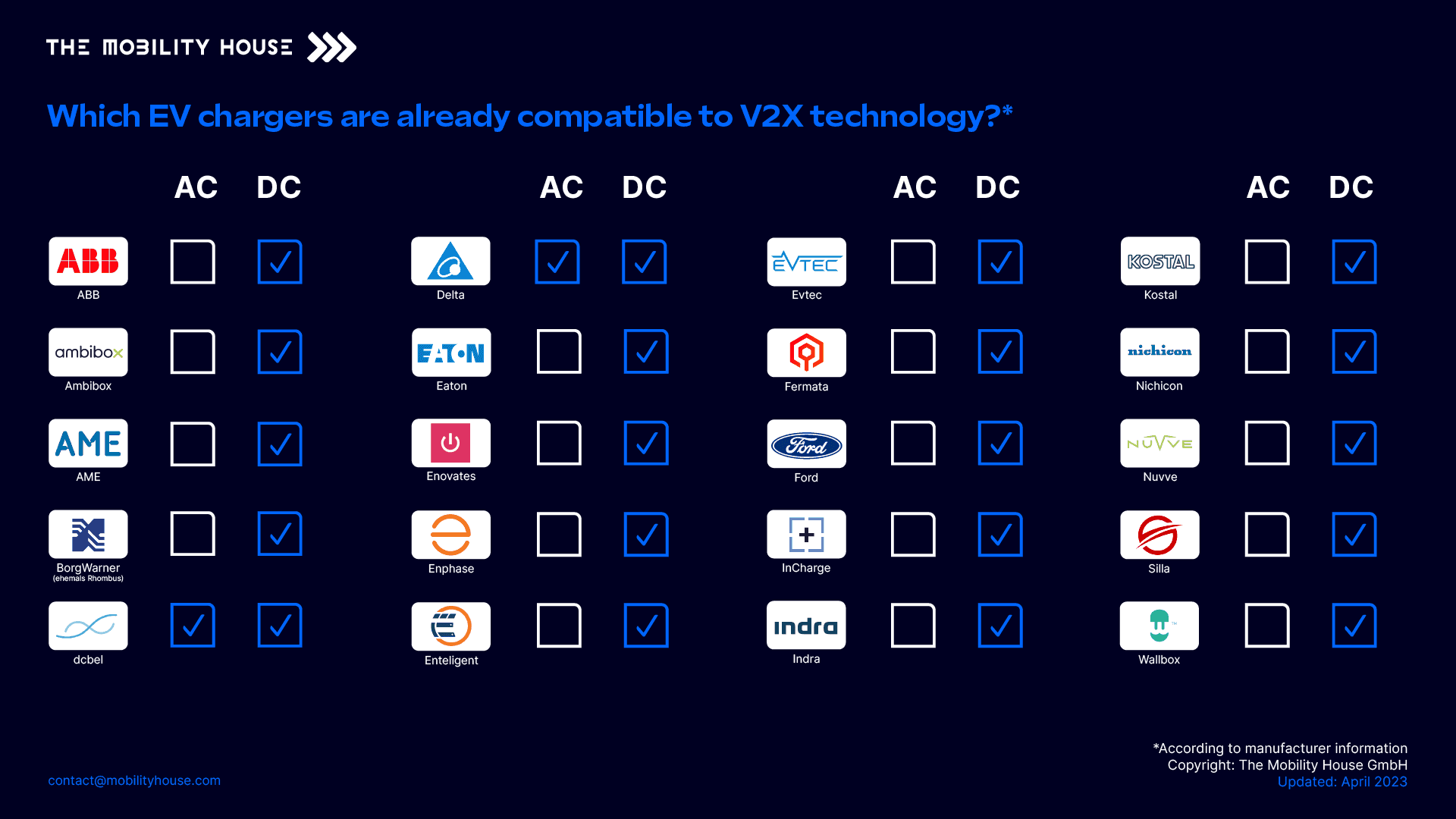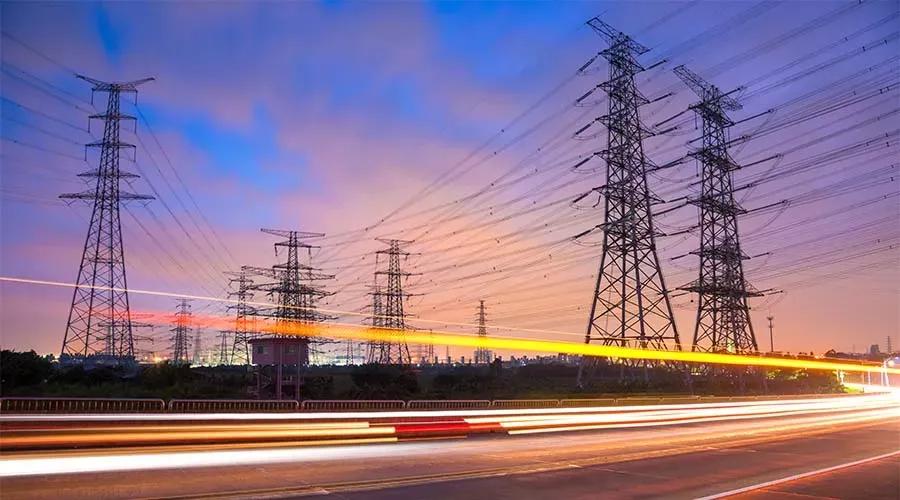Vehicle-to-Grid (V2G) plays a key role when it comes to smart, future-oriented and stable energy supply. Why? Because this technology uses electric cars’ batteries both as mobile power plants and as storage solutions. While this might sound simple, the implementation process is anything but trivial. It all starts with the vehicle and the right charging station, requires the appropriate communication standards between all the elements involved, and ends with the legal framework.
Vehicle-To-Grid: The Potential
The energy crisis is currently a very stark reminder of the fact that fossil fuel-based energy supply is expensive and creates dangerous dependencies. Renewable energies counter both of these situations, and it is expected that they will cover 80% of Germany’s electricity requirements by 2030 in line with the German Federal Government’s target. The challenge, however, is contending with the volatility of wind and solar power.
An intelligent power grid – also known as “smart grid” – where energy is temporarily stored to be retrieved when needed, is a critical lever in guaranteeing a stable energy supply and hitting climate targets in a cost-effective manner . Flexible storage forms an indispensable part of this smart grid. The best thing about this is the fact that millions of flexible storage units are already driving around on German roads. We are, of course, talking about electric cars, to name but one example. What makes matters problematic is that, presently, this potential is still not being untapped most of the time (when cars are parked and not moving, for example). However, numerous recent studies – among others conducted by the Fraunhofer Institute (in 2021), the Climate Neutrality Foundation, and think tank Agora Energiewende (in 2021) – are certain that Vehicle-To-Grid will, in some cases, be the necessary new way of supplying energy. “Assuming that 25% of electric cars will use Vehicle-to-Grid in 2035, and – of that amount – an average of 40% of vehicles are made available for the electricity market, the useful power is 28 GW. Even though the power can only be provided for short periods of just a few hours, Vehicle-to-Grid reduces the need for small stationary storage solutions in homes, not to mention demand for large-scale battery storage systems. So, it helps with using renewable electricity and resources efficiently,” stated the “2035 climate-neutral electricity system” study conducted by Agora Energiewende.
V2G projects implemented by us
We already proved back in 2018 in Hagen, Germany, that Vehicle-to-Grid works – when a Nissan Leaf was for the first time ever prequalified like a large power plant in a V2G application according to the guidelines set out by the transmission system operators (ENTSO-E, Amprion), and the electric car was approved for frequency containment reserve (FCR). The owner benefited from this development, too. At that time, the Nissan Leaf “earned” a good EUR 20 per week due to its involvement in the FCR market with a maximum output of just 8 kW.
Furthermore we joined forces with Renault and Empresa de Electricidade da Madeira S.A (EEM) – an energy utility company – on the island of Porto Santo (Madeira archipelago) to demonstrate how V2G can be integrated into an overall energy concept. As the project name – “Smart Fossil Free Island” – suggests, the island’s energy budget is to be free from CO2 emissions. We developed the EV Aggregation Platform, its smart software, for precisely that purpose. The EV Aggregation Platform optimizes the interaction between conventional electric cars, stationary second-life battery storage systems and bidirectional electric vehicles (V2G) capable of returning the energy from their batteries to the power grid.
V2G – the implementation
But what about the regulatory framework? How do lawmakers classify electric vehicles’ batteries in the smart grid in the German Renewable Energy Sources Act 2023 (EEG) and the German Energy Allocation Act (EnUG)? An overview of the regulations in relevant countries and the technical requirements offers answers to the question of whether it makes more sense to leave the technology required for bidirectional charging in the car or in the wallbox.
What must the wallbox be able to do?
When it comes to bidirectional charging through wallboxes, a discussion reminiscent of the days of Betamax video cassettes and VHS is currently doing the rounds. The question that divides opinion is whether the energy from the BEV should be fed back into the power grid through AC (i.e. with the bidirectional charger in the car) or DC (with the required technology in the wallbox). If the concepts are weighed up against one another, the direct current wallbox variant (which is also most car manufacturers’ preferred option) has the edge.
Even though the wallbox costs more for the direct current version of recharging , it does offer some advantages. The energetic recovery system’s country-specific grid requirements are regulated by the wallbox manufacturer, which is easier to implement than for cars. Additionally, the power electronics are already known from being used in photovoltaic installations and are correspondingly mature.
In the case of AC bidirectional charging , the car incorporates the necessary technology and bears the consequences, too. Both the vehicle’s weight and complexity increase, as do the production costs. Since the OEM is obligated to respond to the electricity operators’ or countries’ potentially very different regional mains connection guidelines, also the costs of the car increase. However, the wallbox is cheaper than the DC variant, but it also has to communicate specifically with the vehicle, so not every wallbox comes into question. With standardization of the grid guidelines planned at EU level, AC may also be a sensible solution, as an OEM can implement much better purchasing conditions and prices upstream of customers than are usual in the electric installation trade.
One problem that has been discussed for a long time has now been solved. Unlike the Japanese CHAdeMO variant since 2011, the CCS plug and the underlying communications protocol have been designed for bidirectional charging since April 2022. The new standard can be installed in some vehicles by means of an over-the-air update. However, it will still take some time before all the components communicate and function smoothly with one another.
Which charging stations are currently V2X-capable

